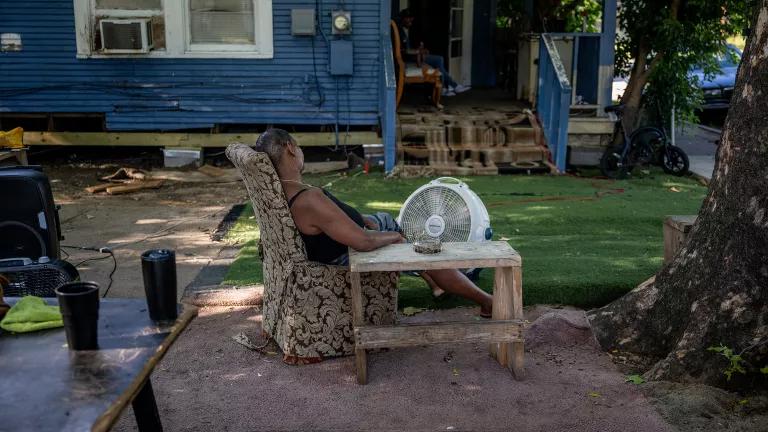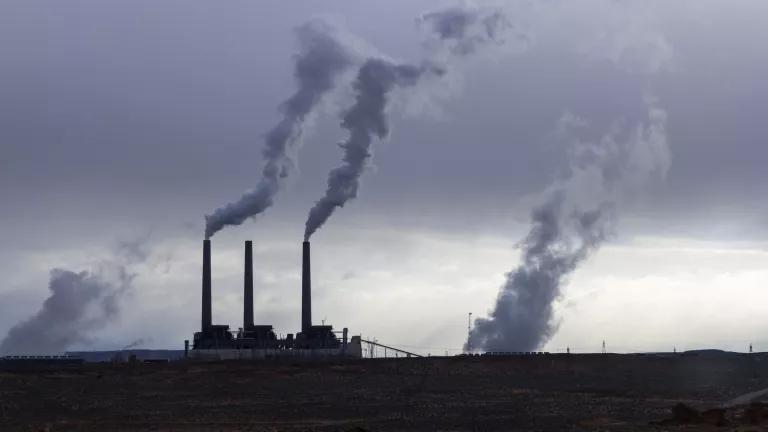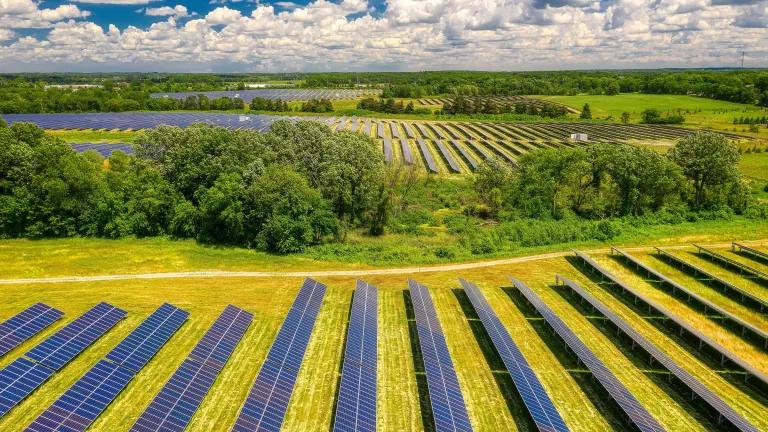Energy Efficiency Reform Is Needed to Reach All Communities
As energy efficiency advocacy intersects housing, energy, and employment systems built on policies that disproportionately burden low-income people and communities of color, it’s important to ask: how are energy efficiency policies, programs, and processes perpetuating inequities from systemic racism and what can be done to change that?

Part 2 of a 4-Part Series (Part 1, Part 3, Part 4)
The past few weeks have illustrated once again how interwoven our society’s racial disparities are. We see higher levels of unemployment claims from people of color and COVID-19 poses a greater threat to communities who live closer to pollution, reside in unhealthy housing that contributes to pre-existing health conditions, and lack access to quality healthcare. As energy efficiency advocacy intersects housing, energy, and employment systems built on policies that disproportionately burden low-income people and communities of color, it’s important to ask: how are energy efficiency policies, programs, and processes perpetuating inequities from systemic racism and what can be done to change that?
This question cannot be answered in a single blog and reforming efficiency alone will not dismantle racist systems. That requires working with allies to target broader reform and reimagine current systems. But we can begin by exploring the root causes of inequities in the efficiency sector—seen by underinvestment in affordable multifamily buildings or underrepresentation of people of color in efficiency jobs—to design solutions that actively combat them. Examples include the legacy of discriminatory housing practices that led to more people of color being renters and living in older, inefficient housing as well as ongoing barriers to employment that make it harder to enter the workforce.
Reform also requires an ongoing commitment that puts racial equity at the center, ensuring those most affected are the most supported and directly part of developing the solutions. This requires difficult conversations, ongoing reflection, and deepening partnerships to best design changes that ensure benefits are especially accelerated for communities historically left behind.
How can energy efficiency help?
Energy efficiency programs—such as installing insulation or efficient appliances—can provide the following benefits to help alleviate some of the pervasive challenges faced by low-income people and communities of color:
- Efficiency saves people money because it is the cheapest way to keep our lights and heat on. Highly efficient buildings and appliances cut energy costs, which reduces energy burdens and lowers the risk of utility shut-offs. This is critical as one in five households forego necessities like food and medicine to pay their energy bills.
- Efficiency cuts pollution and improves health because when people use less energy, power plants run less. This reduces pollution responsible for unhealthy outdoor air that disproportionately affects communities of color and seeps indoors due to poorly weatherized homes. Eliminating pollution improves health, which reduces medical bills and missed work or school days. Efficiency also helps people stay cooler in their home during heat waves, reducing the need to visit public cooling shelters and avoiding potential COVID-19 exposure.
- Efficiency fights the climate crisis by preventing the pollution that leads to climate change and contributes to public health emergencies. This reduces the risk of climate disasters, which have an outsized impact on low-income people and communities of color.
- Efficiency gets people to work with jobs like installing insulation or manufacturing efficient appliances, such as the 3.3 million U.S. efficiency jobs seen in 2019. Efficiency workforce programs can remove employment barriers and provide a path to high-quality careers that include family-sustaining wages and benefits.
What needs to be changed?
There is an urgent need to reform efficiency programs and processes as low-income households and people of color pay a greater percentage of income on energy, a product of historic and continual underinvestment. The federal low-income weatherization program only reaches 0.1 percent of eligible customers and utility customer-funded low-income electric efficiency programs receive only a fraction of overall residential program investment when at least one-third of customers are eligible for no-cost efficiency services.
Solving this problem requires allocating funding to address the historic lack of invest, which results in buildings that are inefficient, in poor repair, and ill-equipped to adapt to a changing climate. Thus, efficiency budgets should be reflective of the community’s relative need and sufficient to reach all eligible people, including those that require necessary home repairs to support broader energy investments (like patching holes in the roof).

And there’s been progress in expanding benefits for more communities, such as through the Energy Efficiency for All Project focusing on upgrading affordable multifamily housing while advocating for broader customer protections. Clean energy advocates can also follow examples like the approach taken to develop the Clean Energy Jobs Act in Illinois that ensured the proposed bill was designed with equitable processes—such as partnership and leadership from environmental justice and other community-based organizations.
In addition, the federal government, state energy agencies and utility commissions, and municipalities should implement the following: (See the bottom of the blog for more details)
- Commit to inclusive community practices to ensure program designs meet the needs of the intended beneficiaries.
- Target programs to communities that need efficiency the most by increasing investment for programs designed to address their needs.
- Design cross-cutting holistic programs to provide a single offering to upgrade buildings and enable comprehensive clean energy and health improvements.
- Invest in making affordable housing efficient to ensure safe, healthy homes for renters and lower energy costs to help preserve affordable housing.
- Collect and share robust metrics on program implementation, equity impacts, and other key data in order to hold program administrators accountable.
- Support diverse and small businesses by incentivizing increased contracting opportunities and partnerships with utilities and efficiency implementers.
- Develop a strong, diverse workforce by ensuring training opportunities are linked to high-quality careers and available to underserved communities of color.
- Ensure accessible, reliable, and affordable internet service so everyone can access online offerings like workforce training and efficiency programs.
- Include health requirements like healthier building materials to keep installers and residents safe, and advance air filtration systems especially for buildings near high pollution sources.

Moving Forward
Without actively shifting how we advocate and what we advocate for, the efficiency sector will continue to perpetuate ongoing institutional racism and leave people behind. We have an opportunity and obligation to collectively create the new reality we want, building on examples of success. By collaborating with advocacy groups from communities most affected by racism to design policies and programs that counteract racial inequities, we can help advance equity while ensuring access to clean air, a healthy living environment, and a thriving economy.
Next Blog: A closer look at federal efficiency programs
*Recommendation Details*
- Commit to inclusive community practices that enable smaller community-led organizations to participate in decision-making processes, resulting in program designs that are in tune with community needs. This can be done by actively engaging low-income people and communities of color by ensuring community groups are part of–and leading–discussions from the onset, allowing sufficient time to develop concepts, and scheduling meetings in locations and at times that would attract the most participation.
- Target programs to the communities that need efficiency the most, such as people living in low-income neighborhoods or in high-pollution areas. This involves shifting funding to allow for larger rebates and investments in these communities; increasing marketing, outreach, and education; and designing programs that specifically address the needs of the particular community or region. Fundamental program rules (like how we measure the costs and benefits of programs) may need to be adjusted to successfully implement this strategy.
- Design cross-cutting holistic programs to best serve people. While customers would apply to one program, a coordinated effort behind the scenes would enable comprehensive upgrades that include clean energy (e.g., energy efficiency, electrification, electric vehicles, and solar panels), housing repairs (e.g., repairing roofs or closing holes that lead to drafty buildings), and health improvements (e.g., removal of mold and lead). Expanded partnerships could also benefit these efforts by pairing marketing and outreach with other activities, such as with organizations that conduct emergency home repairs, provide in-home health care visits, or offer food assistance.
- Invest in making affordable housing efficient as one means to build financial stability and improve health. Housing policies are rooted in a history of racist and discriminatory practices, such as redlining. These practices reinforced segregation and prevented access to home ownership for black families. This resulted in a high number of renters who don’t make building improvement decisions and thus require unique approaches to upgrade their homes. There also continues to be a shortage of affordable housing, on top of many existing affordable housing properties being old, inefficient, and poorly maintained. Efficiency can help reduce energy costs and enable reinvestment of those savings into much needed repairs. Programs should serve all buildings (i.e., those that are required to provide affordable rents as well as those without similar restrictions). Whenever necessary, upgrades should be accompanied by safeguards to avoid tenant displacements.
- Collect and share robust metrics on program impacts and hold utilities and program administrators accountable for meeting targets tied to those metrics (e.g., race, zip code, income status, property ownership, and energy burden). Performance targets tied to appropriate metrics should be established and information should be publicly available.
- Support diverse and small businesses by incorporating direction for diverse supplier policies and incentivizing efficiency contractors to partner with community-based groups. Provide additional support (e.g., pay for consultants to help smaller operations write competitive bids) to increase opportunities for small businesses and non-profits who compete against large companies for energy efficiency contracts.
- Develop a strong, diverse workforce by establishing employer workforce requirements (such as family-sustaining wages, benefits, career paths, and a safe working environment) as well as employee standards requiring highly trained and skilled workers. To further advance equity, ensure training efforts are accessible to all, include stipends for participation, lead to industry-recognized certifications, and provide pathways to quality jobs—including in underserved communities of color. To help get people back to work safely, utilize targeted hiring (e.g., location or target population) to counter underlying barriers to entry and establish strong safety protocols before returning to work.
- Ensure accessible, reliable, and affordable internet as remote access is critically important to participate in clean energy programs, utility bill assistance, and efficiency training programs. Efficiency advocacy must be integrated with efforts to close the digital divide as a lack of access to functioning and affordable internet will perpetuate inequities for low-income communities.
- Include health requirements like healthier building materials to avoid harmful substances for installers and residents, especially in communities with greater risk of respiratory ailments. This also includes making sure that heating and ventilation efficiency work includes high-quality air filtration systems, especially near pollution sources (e.g., industrial throughways or refineries) as air quality is worse in impacted communities and can increase susceptibility to respiratory ailments.





